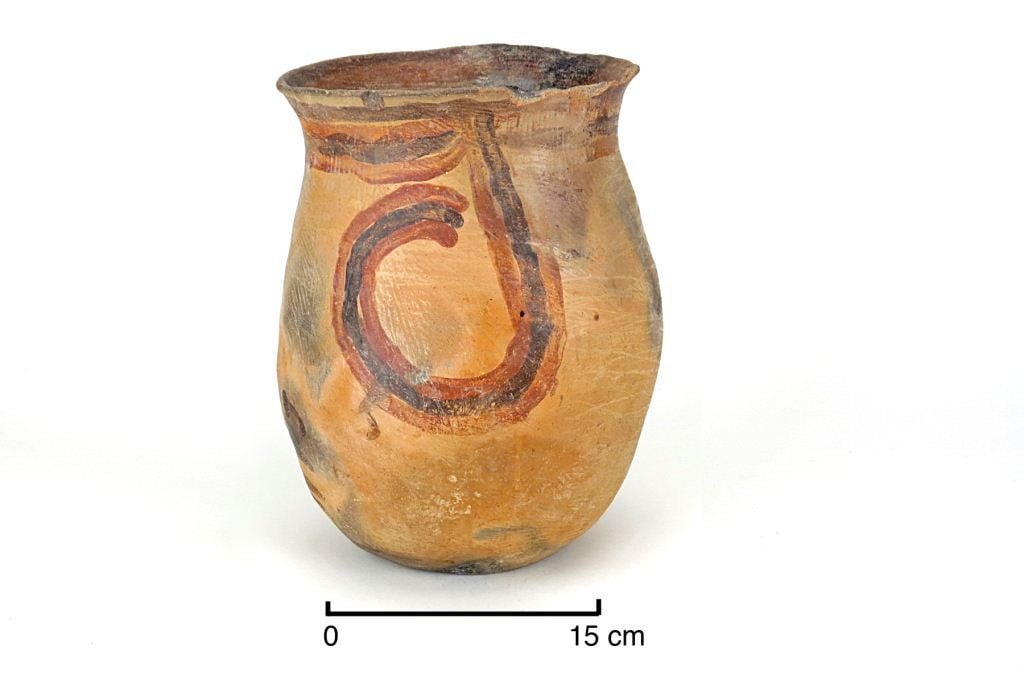Gobernador Polychrome Pottery: Uncovering the Origins, Characteristics, and Cultural Significance of Early Navajo Ceramic Artifacts

Gobernador Polychrome pottery, a distinct Navajo pottery style, offers a fascinating glimpse into the artistic and cultural heritage of the Navajo people. First identified in 1936 by Kidder and Shepard, this pottery type showcases the Navajo’s ability to create intricate designs and skillful craftsmanship. This article delves into the history, production techniques, and aesthetics of Gobernador Polychrome pottery, shedding light on the diverse influences and artistic innovations that characterize this distinctive art form.
The Gobernador Polychrome pottery type was identified by Kidder and Shepard in 1936. It is a distinctive Navajo decorated pottery style found in the Upper San Juan region, closely associated with the Gobernador phase. Scholars initially believed that this pottery was introduced and possibly made by Pueblo refugees, but later research revealed that Navajo potters had been producing Gobernador Polychrome for at least 60 years before the Pueblo revolt. The pottery was produced until the mid-eighteenth century when the Navajo abandoned the Upper San Juan region. Its designs and surfaces reveal influences from various Rio Grande Glaze Ware, Tewa, Jemez Black-on-white, and Hopi Yellow Ware types, reflecting the Navajo’s interactions with various groups before the Pueblo revolt and refugee periods.
Gobernador Polychrome vessels are completely smoothed but often have bumpy and irregular surfaces. The interiors of bowls and exteriors of jars are lightly and unevenly polished. Vessels and sherds are dense, hard, and strong, with variable wall thicknesses. Pastes are vitrified and can be bloated and brittle, indicating high-temperature oxidation firings. The outer paste is typically red, orange, or buff, with a distinctive gray to dark gray core. Surface colors range from orange to buff, red, yellow, brown, or gray. The temper often comprises tiny white to gray angular fragments, including siltstone, sandstone, crushed sherd, and occasional sand particles. The paste may also contain gray, yellow, and white clay pellets. The vessel forms resemble contemporary Pueblo ceramics, with bowls and jars being the most common.
Most Gobernador Polychrome bowls are carinated with a prominent rounded shoulder on the exterior. Jars have wide necks, outward-curving rims, and relatively flat bases that rise abruptly to the body. Decoration involves a combination of slips and red and black pigments, with unpainted areas often slipped while painted areas remain unslipped. The unslipped areas feature red and black painted designs, creating a polychrome effect.
Solid red motifs framed by thin black lines are common in the painted designs. These motifs include parallel bars, diamonds, stepped triangles, triangles, and occasional naturalistic elements such as feather motifs. Jar decorations are often divided into three distinct fields: a red-slipped upper neck area, one or more unslipped decorated bands around the jar’s widest part, and a slipped, unpainted field on the lower body. The upper part of jar neck interiors may be slipped and sometimes painted. Bowl interiors and exteriors are typically decorated, with the painted area below the exterior rim left unslipped. Bowl interior treatments vary but often include an upper yellow zone and lower red zone, both of which may feature designs executed in thin black lines.
Gobernador Polychrome pottery stands as a testament to the rich artistic and cultural heritage of the Navajo people. With its unique combination of influences from various neighboring groups, Gobernador Polychrome demonstrates the Navajo’s adaptability and creativity in incorporating diverse elements into their own distinctive pottery style. The intricate designs, vibrant colors, and skilled craftsmanship displayed in these pieces continue to captivate both collectors and scholars alike, providing a window into the historical interactions and artistic traditions of the Navajo people in the American Southwest.
Bibliography
- Hartman, R. P., Musial, J., & Trimble, S. (1987). Navajo Pottery: Traditions and Innovations. Northland Press.
This book provides an in-depth look at Navajo pottery, including Gobernador Polychrome. It includes detailed descriptions of the techniques and materials used to create Gobernador Polychrome, as well as a history of the art form. - Batkin, Jonathan. (1987). The Pottery of the Pueblos of New Mexico, 1700-1940. University of New Mexico Press.
While this book focuses primarily on Pueblo pottery, it includes a section on Navajo pottery, including Gobernador Polychrome. It provides an overview of Navajo pottery traditions and includes photos of Gobernador Polychrome pieces. - Blair, M. E., & Blair, L. (1999). The Legacy of a Master Potter: Nampeyo and Her Descendants. Northland Publishing.
This book focuses specifically on the pottery of the Nampeyo family, who were renowned for their innovative techniques and designs. While it doesn’t focus exclusively on Gobernador Polychrome, it includes examples of the style and discusses its importance within the broader context of Southwestern pottery.
